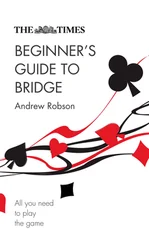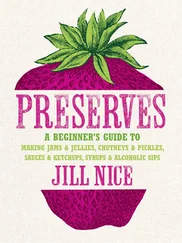Once the bags are set up, cut a cross in the center of the top of the bag the size of the plant’s interim pot, peel back the plastic, unpot the plant, and plant. Cut a pot-sized cross in the top of the bag between your centered plant spot and the edge and sink a four-inch plastic plant pot into the compost up to its rim in each position. Direct the water and feed into these pots and it will quickly soak down to the bottom of the bag.
Keep It Simple
If you have more than a few bags, it is worth investing in a drip feed watering system with a timer. Cannabis has an enormous appetite for water and will quickly fill the bag with roots, which, unlike soil, do not retain water. Bags can dry out much more rapidly than barrels.
Smart Pots Aeration Containers
Smart Pots aeration containers are a recent innovation in containers that are being used very successfully by many growers. They are made from a super-strong black fabric material that warms up quickly in the spring, giving the plants a friendly environment for rapid growth. The porous nature of the fabric provides excellent breathability, favorable for root development, and allows heat to escape through evaporative cooling when the weather gets hot. The fabric also drains very well.
Of interest to the outdoor grower is that the fabric base will contour to and establish capillary contact with the soil. Of interest to both outdoor and indoor growers, Smart Pots come in many sizes, from small to very large, so you can customize to fit your growing space.
Depending on space and privacy considerations, you might consider a large raised bed. Raised beds are structures that have four sides and hold soil. They are a great option for a small space, for areas with poor soil, or for a hillside garden. If you want to grow in a moist area that has poor drainage, the raised bed will allow for better drainage. If you have a sloped or terraced garden site, raised beds will help define these areas and make it easier to grow plants in the more difficult to reach areas. The advantages are many: lots of food and good drainage, yet the roots are protected from burrowing rodents by the wire bottom of the container.
Another great reason for using raised beds is that the bed can be made to any height. If you have physical disabilities, have limited mobility, or cannot bend easily, the raised bed can work very well for you. Make sure it is built to the height that works best for you. If it is a low bed, adding a ledge on the top will allow you to sit while gardening. And the ledge is great for older gardeners or those who cannot easily get down on hands and knees to plant or weed.
Four large cannabis plants can be grown in an 8 × 8 raised bed. If you have sufficient sunlight and pay attention to feeding and watering, normally expect a yield of a pound to a pound and a half from each plant.
Prep Work
First, plan for the seasonal movement of the sun, and mark out your square. Second, check the soil drainage where you plan to locate the bed. Do a small percolation test by digging a few small holes one foot in depth and fill with water. Monitor to see how quickly the water drains. If it stands for hours like it is in a bucket, you have poor drainage and probably compacted clay soil. If you have a small garden tiller, do a light pass over the square to improve drainage; otherwise, do a little aerating with your garden fork.
Building a Raised Bed
Wood, stones, bricks, and cement are the most common materials used when making raised beds. Wood is easy to find, to build with, and often is not that expensive. When building your beds with wood, you want to choose wood that will not rot easily. If you can, choose wood such as cedar or redwood, as both of these are more resistant to rot because of their natural oils. Stay away from pressure-treated wood or wood covered in creosote, as these products have heavy metals and poisons such as arsenic, copper, and chrome. These chemicals can leach into your garden soil and, ultimately, into your food.
If wood is not the look you want, rocks are often easy to find and can be very attractive. One disadvantage to using rock is that it does not offer the same barrier from weeds and grass as solid wood sides; however, using cement to fill in the crevices and cracks between the rocks will make for a more solid barrier.
If you want a more defined raised bed but do not want to use wood or stone, try using cement blocks, standard masonry bricks, or larger interlocking bricks. They come in various colors and sizes and can be easily stacked to increase the height of your raised bed if height is a concern. For a more involved and a permanent option, make your raised beds with cement.
This design is for a 4-foot-wide, 8-foot-long, 12-inch-high raised wooden bed. Here is your list of materials for one raised bed:
• ¾" drain rock (enough to cover the square footage of the bed to two or three inches in depth)
• A roll of chicken wire or similar mesh size metal (heavier gauge is fine)
• Three 8-foot lengths of 12" × 2" (12 inches wide by 2 inches thick) cedar or rosewood board (Note: railroad tie is not recommended, as it has been soaked with creosote to prevent wood rotting. If you must use railroad tie, enclose the inside of the bed with flashing or heavy-duty black plastic so the plants do not come in contact with it.) Cut one of these 8' × 12" × 2" boards in half to create two pieces of 4' × 12" × 2" board.
• One 4-foot length of 2" × 4" (2-inch thick by 4-inch wide) board. Cut this into four boards, each 1 foot in length.
• Twenty-four 4-inch wood screws for full dimension wood, or 3-inch wood screws for planed wood
• Drill
• Screwdriver to match the wood screw heads
Most building supply stores will cut the pieces of wood for a minimal charge, saving you time. Following the earlier instructions, you should have two (8-foot by 2-foot by 12-inch) pieces and two (4-foot by 2-inch by 12-inch) boards to make your rectangular box; you should also have four (1-foot by 2-inch by 4-inch) pieces.
Assembling Your Raised Bed
Here are the steps to follow:
1. Lay each 8-foot length of board on the ground. Place a piece of 1-foot long 2" × 4" board at each end. Stack the short board on top of the long board, aligning the 12" length of the short board with the 12" end of the long board. Using three screws on each, attach the 2" × 4" length to the long board. Drilling a guide hole slightly smaller in diameter and not quite the length of the screw into the wood first will make screwing the pieces together easier. Attaching the 2" × 4" to the long board will give the sides of your raised bed more support.
2. These 8-foot boards will be used as the long sides of your rectangular box. The 4-foot lengths are the ends of your box. Align each 4-foot length to the 8-foot boards at ninety-degree-angles, and attach using three screws on each corner. You now have a four-sided raised bed.
3. Proceed to spread the drain rock evenly within the rectangle, pick up the bed, and lay your wire bottom out flat on top of the layer of drain rock. If you are using chicken wire, it will tend to curl back into its rolled form as you struggle to spread it out. Have the wire overlap the outside dimension of the enclosure by two to three inches. Then lay the bed down on top of the wire. Using a heavier gauge rigid panel type of wire is easier to work with alone, as you can just lay the flat panels down. Make sure the holes are no larger than the ones in chicken wire, to keep out voles.
4. If you prepare the raised bed in the fall, you can stack it with manure and mulch the top with spoiled hay to mellow through the winter. In the spring you can till in all the site-made compost; throughout the winter, the nutrients have been bathed with rainfall and composting in your bed. A garden fork is all you will need to work the bed, although some growers have tiny tillers.
Читать дальше












